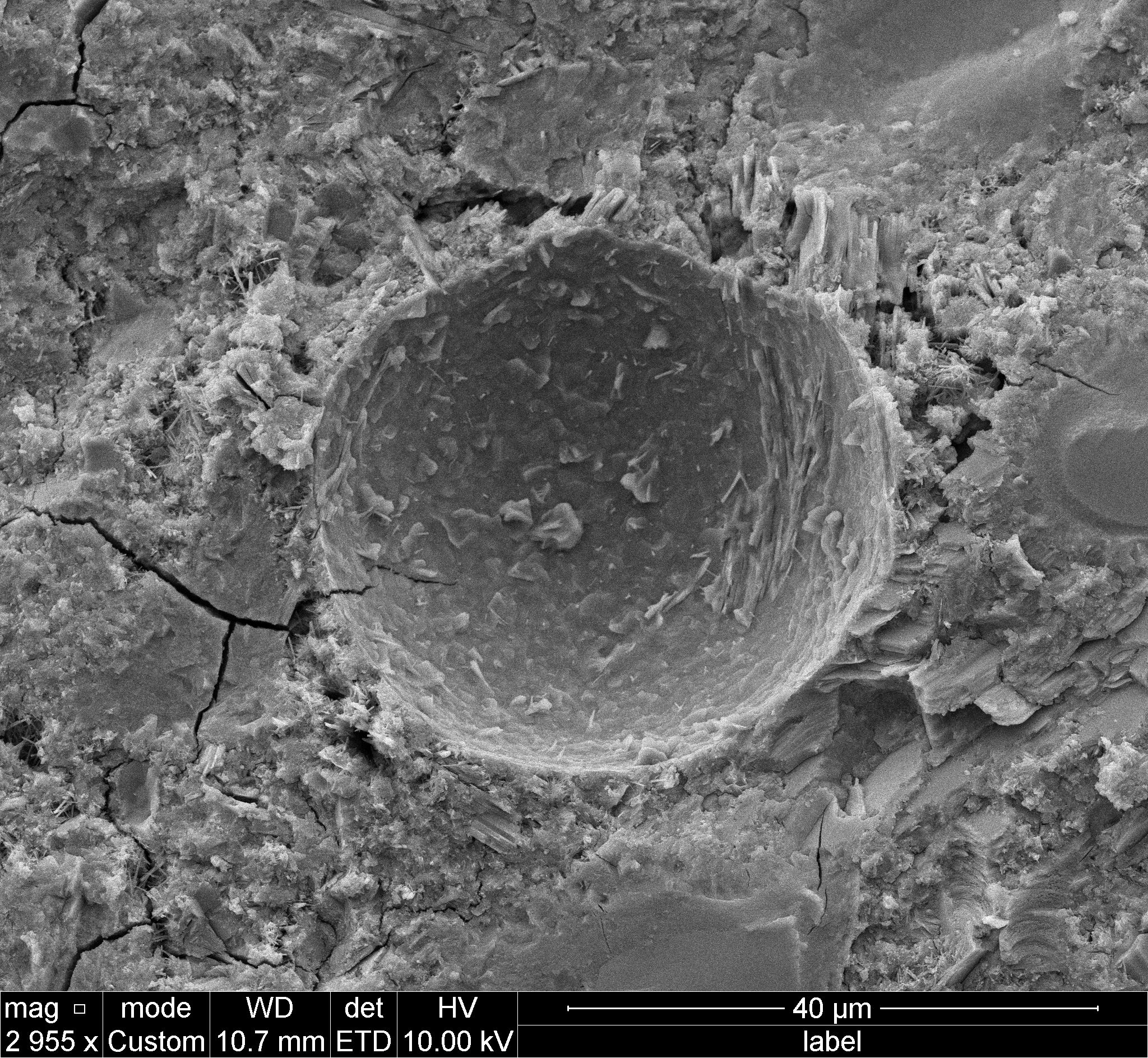Air Void Microstructure
Background
The microstructure of the shell that forms around the air void is denser than the surrounding matrix and serves a vital role for protection against frost damage. The shell must be permeable enough to allow water to enter, with small enough pores so that the ice cannot easily escape. Since it is more energy-intensive to grow a crystal with a small radius (due to its surface energy), it is difficult for a crystal to penetrate a small pore except at very low temperatures. This is described by the Gibbs-Thomson equation.

Summary of results & current work
We found that surfactants that interact more strongly with calcium ions offer better frost protection at lowers dosages, evidently by forming shells with more numerous tiny pores. The numerous pores offer more access to the macroscopic ice growing in the air void so that even if one pore is inaccessible due to clogging by ice growth, the macroscopic ice can still pull water from surrounding pores and maintain suction. We are currently working to quantify the difference in permeability between the shell and surrounding matrix and to model the mortar strain response to freezing. We are also exploring how the shell is made. Recent evidence suggests that particle stabilization (Pickering stabilization) of the air bubbles may be responsible for the distinct microstructure.
Relevant Publications
“Air Entraining Admixtures: Mechanisms, Evaluations, and Interactions”, L.E. Tunstall, M.T. Ley, and G.W. Scherer, Cement and Concrete Research (under review 2021)
“Studying AEA interaction in cement systems using tensiometry”, L.E. Tunstall, G.W. Scherer, and R.K. Prud’homme, Cement and Concrete Research 92 (2017) 29-36
“Linking surfactant molecular structure to mortar frost protection”, L.E. Tunstall, G.W. Scherer, R.K. Prud’homme, International RILEM conference on materials, systems and structures in civil engineering. conference segment on frost action in concrete (August 2016)